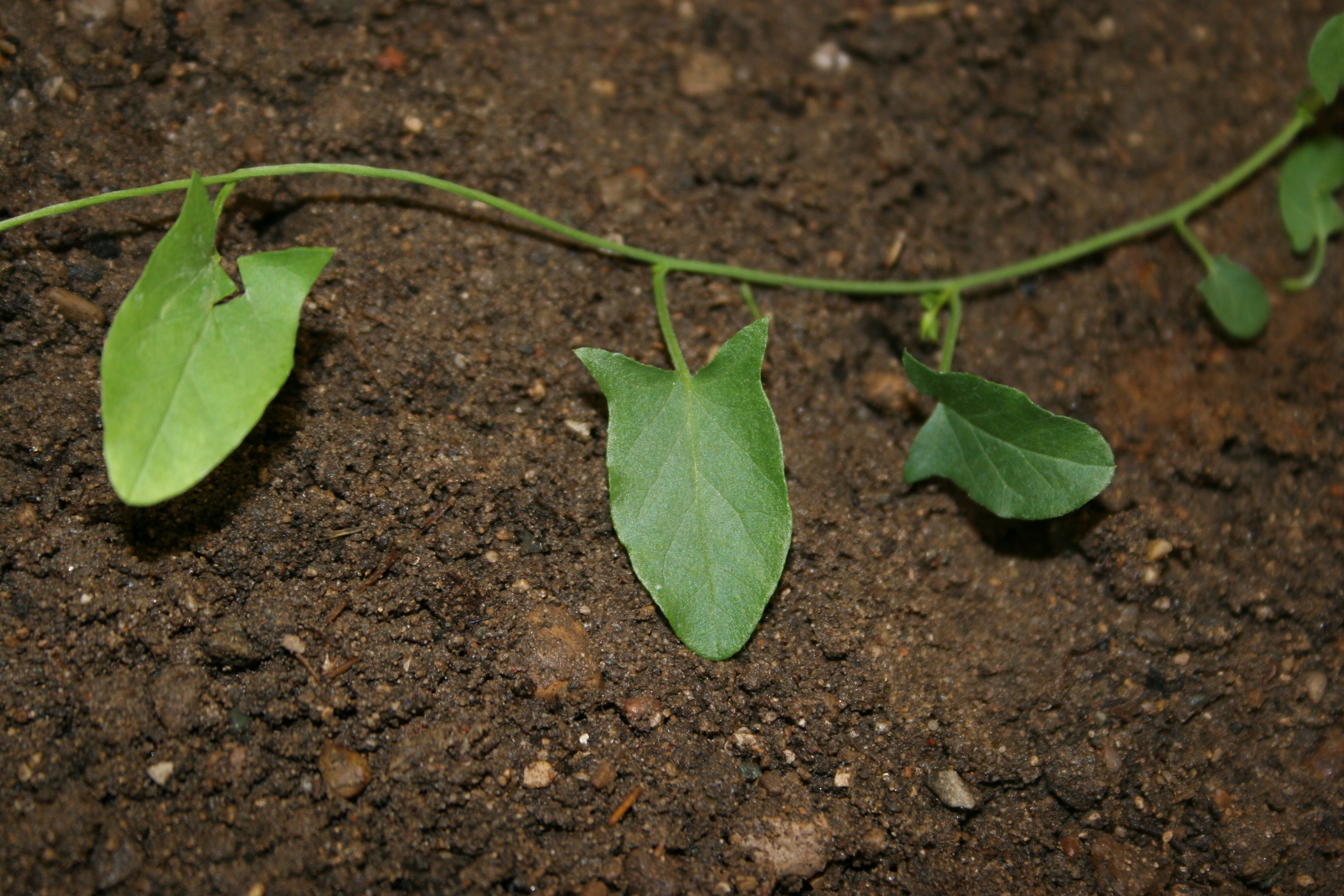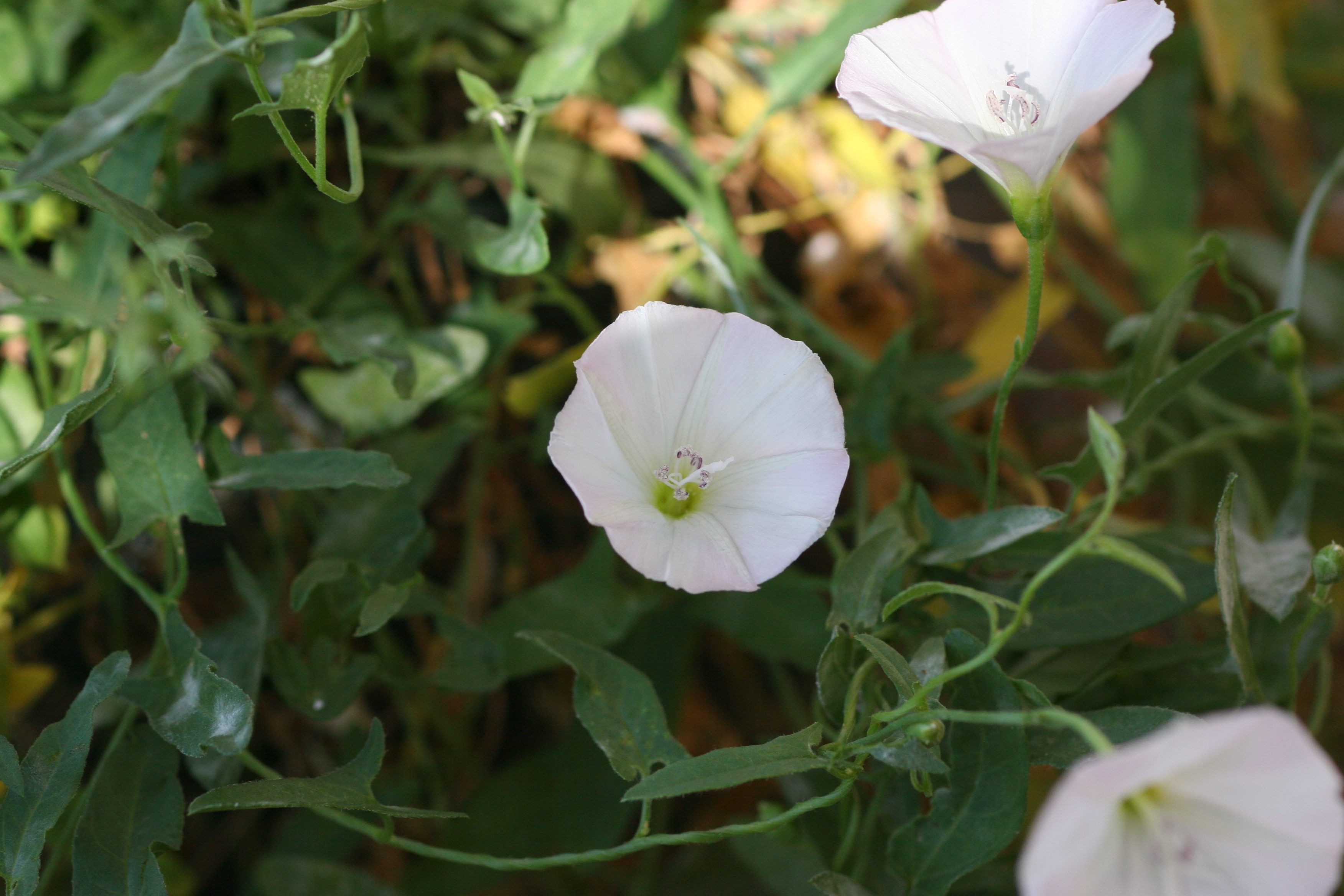How to identify field bindweed in Christmas tree production – Part 1
Learn the biological characters and how to identify field bindweed (Convolvulus arvensis).

Field bindweed (Convolvulus arvensis) is native to the Mediterranean region and Western Asia. It is presumed to have been brought and introduced to the United States in 1739, according to Sosnoskie, 2018. This is a perennial plant in the Convolvulaceae family. Morning glories (Ipomoea spp.), dodder (Cuscuta spp.) and alkaliweed (Cressa truxillensis) also belong to this family. Field bindweed is one of the major problematic weed species in Michigan Christmas tree production. In the first part of this article series, I will discuss the biological characters and how to identify field bindweed in Christmas tree production.
Habitat
Field bindweed is commonly found growing in fence row thickets or growing on fences and hedges. It is a weed of most agronomic and horticultural crops, Christmas tree productions, and of landscapes and turf.
Growth habit
It grows prostrate along the ground until it comes in contact with other plants or structures and then it grows up and over anything that comes in its path.
Seedling
Cotyledons are smooth, dark green, square to kidney-shaped, long-petioled, usually with a slight indention at the apex (Photo 1). The venation of the cotyledon is whitish and the margins are entire. Young leaves are bell-shaped (1.5-3.5 centimeters long), lobed at the base and on the petioles. When young plants emerge from established rhizomes, no cotyledons are present.
Roots
The root system of field bindweed is unique as it has both deep vertical and shallow horizontal lateral roots. Seventy percent of the total mass of the root structure occupies the top 2 feet of soil but the vertical roots can reach depths of about 30 feet or more. The lateral roots are no deeper than 1 foot. Research from Integrated Pest Management for Home Gardeners and Landscape Professionals, 2011, has shown that field bindweed root and rhizome growth can attain a weight of 2.5 to 5 tons per acre.
Shoot
Stems are smooth to slightly hairy and generally trail along the ground or climb on other vegetation and objects in its path. Young stem, when broken, can exude a milky sap. Leaves are 4-6 centimeters long, arrow-shaped and alternate (Photo 2). The lobes point away from the petiole at the leaf base.

Flowers
Field bindweed flowers from June through September. Flowers are solitary or two-flowered (occasionally to five) in the leaf axils. Flowers are trumpet-shaped, 1.2-2.5 centimeters long and usually white to pinkish/purple (Photo 3). They open in presence of light (daytime) and close tightly in darkness into a twisted tube, according to Sosnoskie, 2018.

Fruit and seeds
The fruit is rounded capsule to an egg-shaped with four seeds. Seeds are large (approximately 4 millimeters long), rough textured, dull gray to brown or black with one rounded side and two flattened sides. According to Sosnoskie, 2018, field bindweed infestations can produce between 20,000 and 20,000,000 seeds per acre. The viability of freshly produced seed is highest 20-30 days after pollination. However, changes in the seed moisture content and the permeability of the seed coat can result in dormancy, which may require scarification to overcome. The viability of seeds generally reduces with time; however, there are reports that field bindweed seeds can remain viable in soil up to 40-60 years.
Propagation
Reproduction or propagation is by both seeds and rhizomes. Rhizome pieces are spread by cultivation, on-farm implements and in the topsoil. Shoots from these rhizomes emerge in early spring. Seedlings emerge from the seeds in spring and early summer.
Similar species
Hedge bindweed (Calystegia sepium) is a similar species to field bindweed and often people can get confused and lead to misidentification. Hedge bindweed has larger leaves than field bindweed and they have a pointed apex rather than a rounded one. Flowers of hedge bindweed are larger (3-6 centimeters long) and have large bracts that conceals the sepals.
Wild buckwheat (Polygonum convolvulus) is another similar species, as it is a vining annual with similar leaves. Wild buckwheat can be distinguished from field bindweed as the lobes at the base of the leaf point toward the petiole, and it has small inconspicuous flowers in axillary and terminal clusters.



 Print
Print Email
Email

